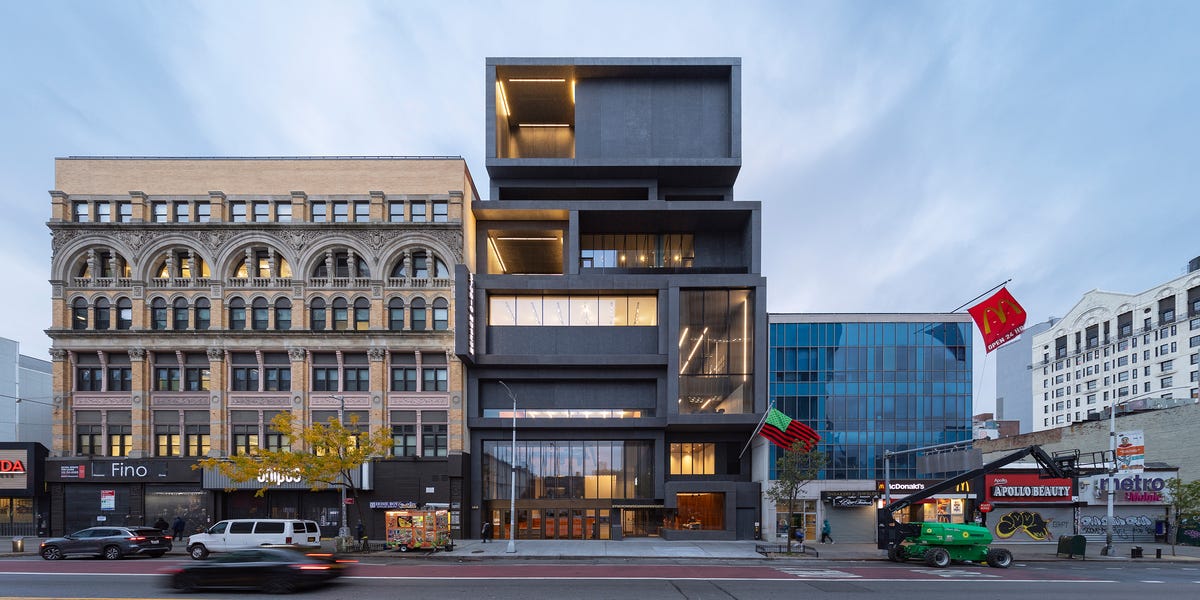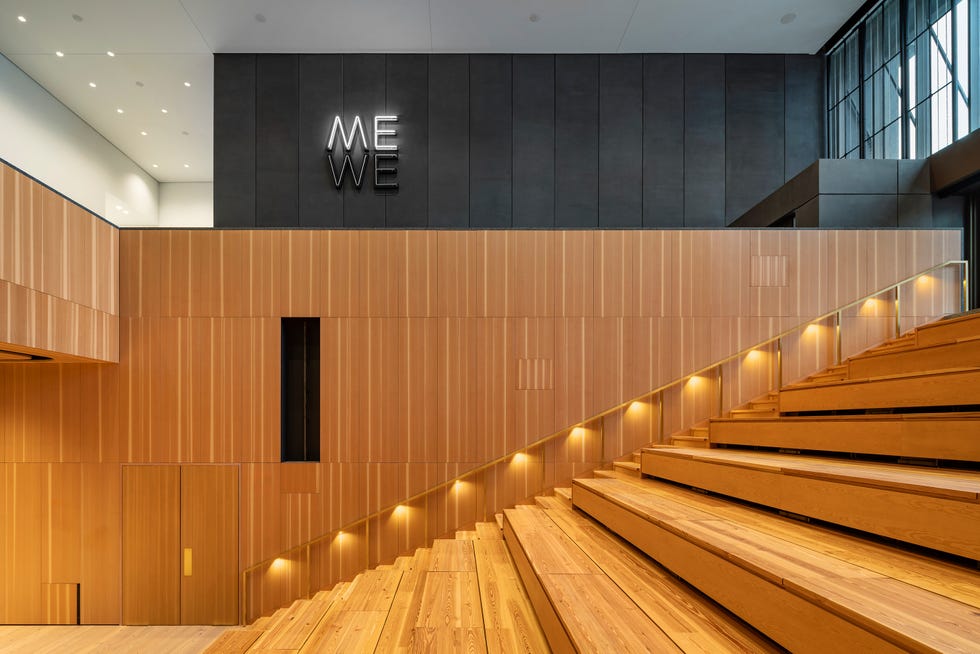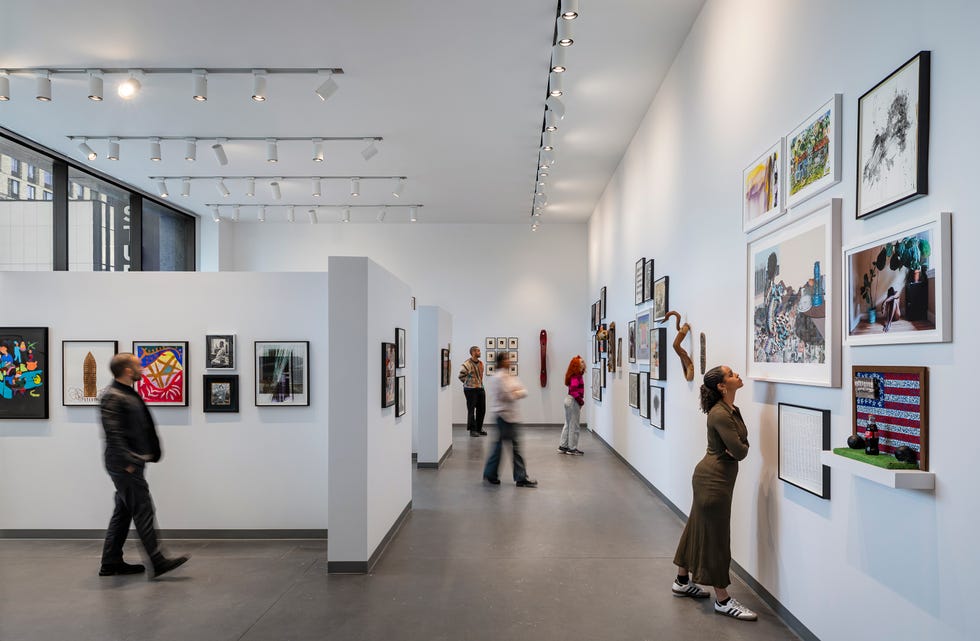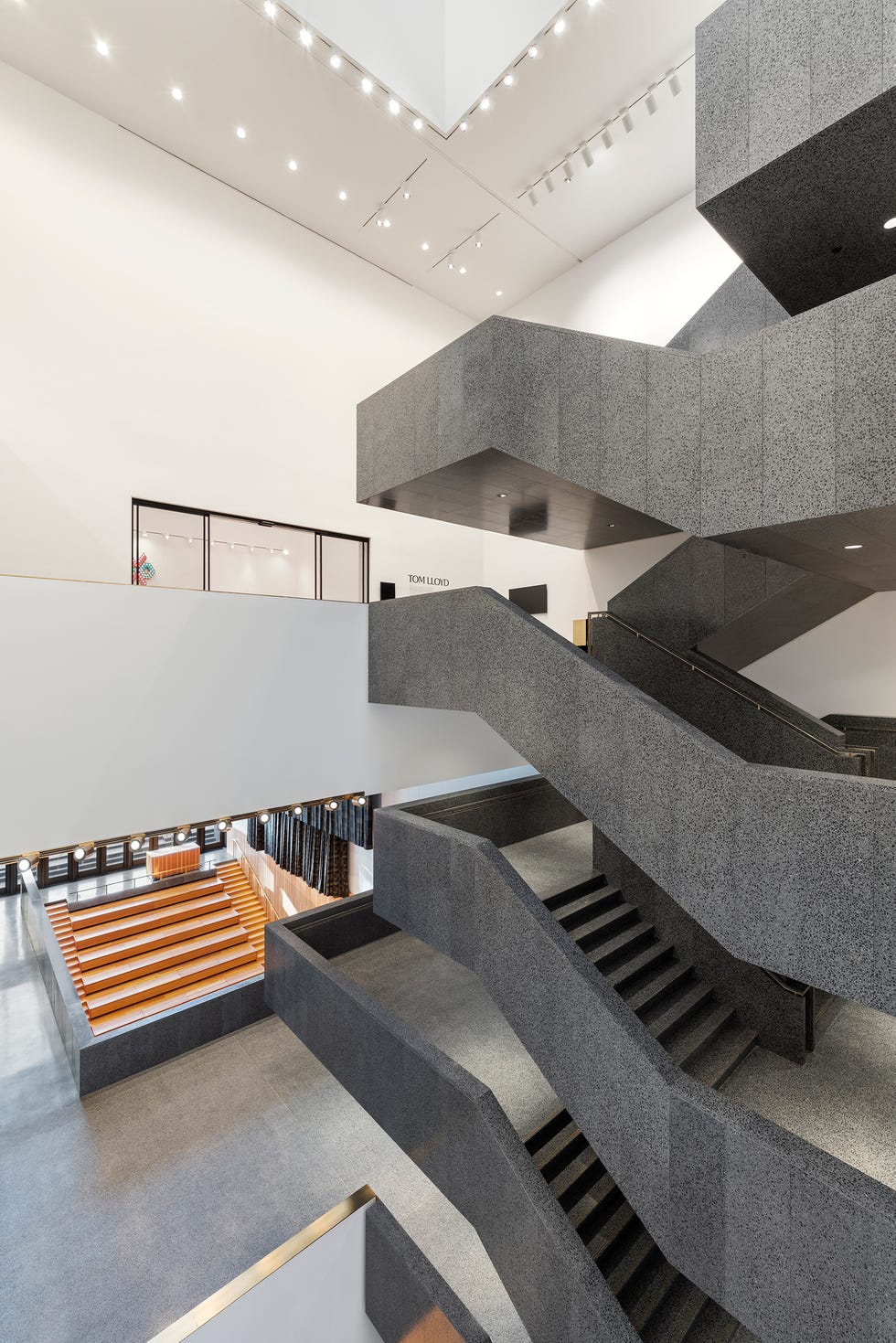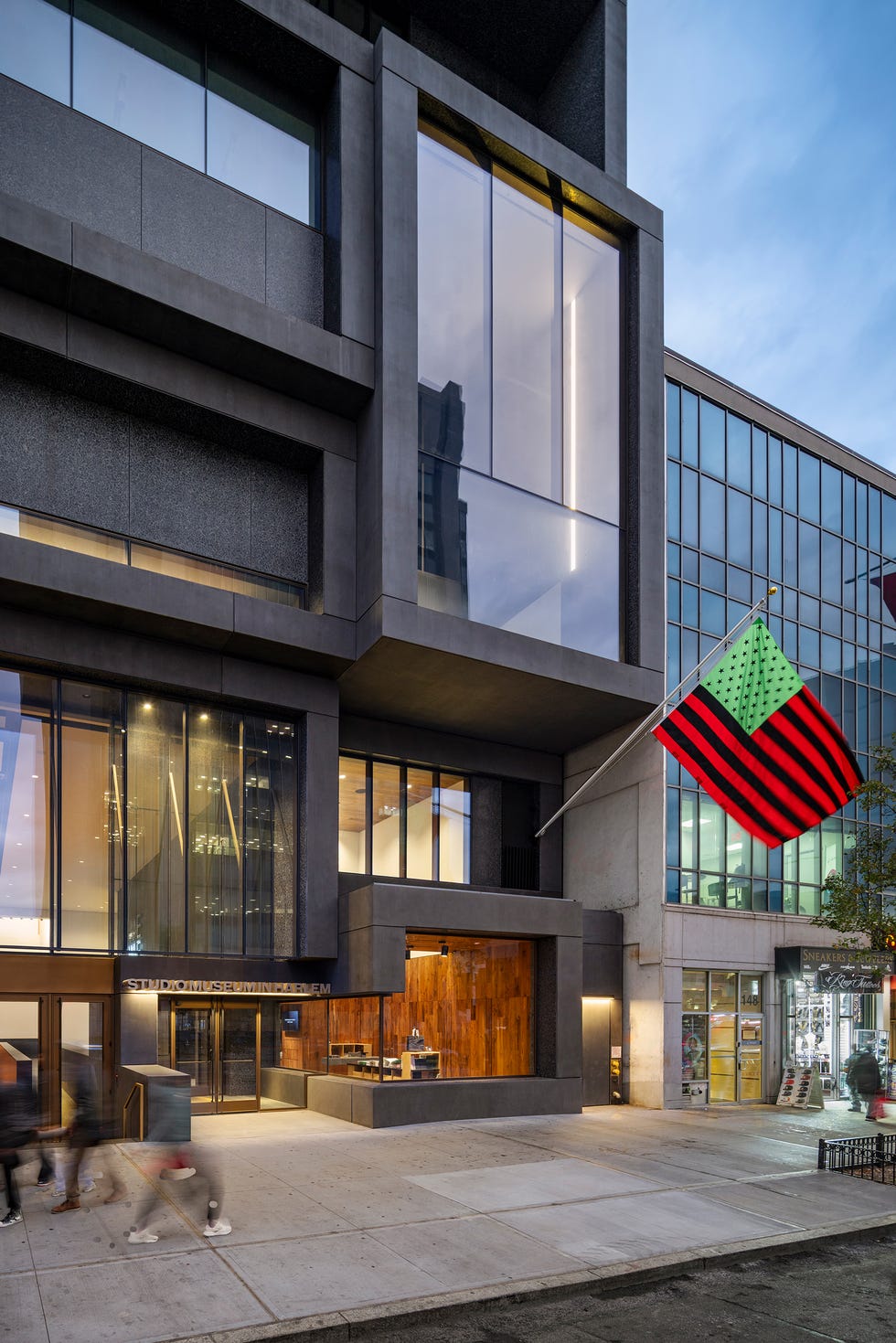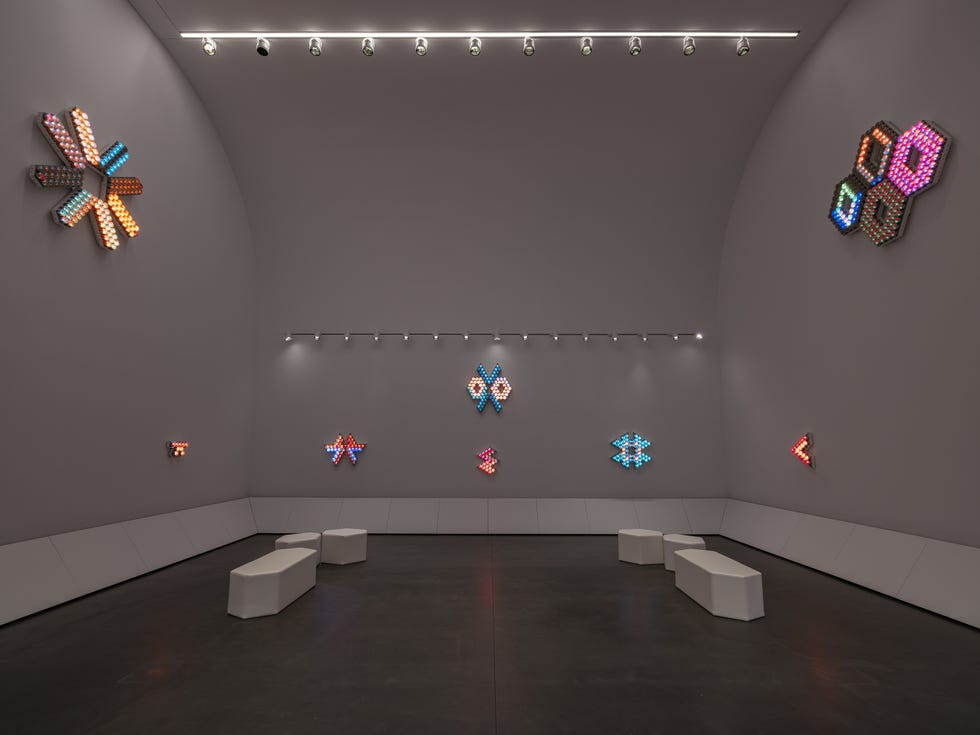Since its founding nearly six decades ago, the Studio Museum in Harlem has been at the forefront of the neighborhood's ever-evolving cultural landscape. But for the past seven years, the New York institution dedicated to Black and African Diaspora artists has been closed as construction progressed on its new home, a striking seven-story building that will be the first purpose-built space in its history. Everything will finally be revealed tomorrow, November 15, when the museum officially opens to the public with a day of free entry, creative workshops, games and performances.
Founded in 1968 at the height of the Civil Rights Movement amid political turmoil and social unrest, the museum provided a crucial platform for marginalized, overlooked talent.
“Black artists were rarely shown in gallery exhibitions and museums at the time, featured in publications or in scholarly articles,” said Thelma Golden, the museum’s director and chief curator, during the Nov. 6 press preview. “Our museum had to be created because our founders knew that Black artists created vital and important works that reflected Black life and transcended narrow notions of art of African descent.”
When it opened, the museum was located in a rented second-floor loft north of 125th Street, one of Harlem's main arteries. In the early 1980s, the company moved to its longtime home, a five-story building redesigned by architect J. Max Bond Jr.
“We could have looked for another location in Harlem and moved into a space in an existing building,” Golden says. “But we knew, and our public knew, that this place, where the museum has been since the early 1980s, is where we belong.”
Designed by Adjaye Associates with Cooper Robertson as executive architect, the new 82,000-square-foot structure doubles the size of the museum and pays homage to the surrounding neighborhood, particularly its stock of handsome brownstones, through a number of clever design decisions. (Company founder David Adjaye withdrew from the project in 2023 after allegations of misconduct, which he denied.)
Among the first design elements that visitors notice is the huge wood-paneled “corner” that starts on the first floor and runs downwards, where it features rows of seats leading to a stage. Although this area is underground, it is naturally lit thanks to a light well that allows sunlight from the roof garden to reach all seven floors. An eye-catching staircase clad in dark terrazzo not only serves a functional purpose, but also reflects the structure's prefabricated concrete facade, which is finished in a deep slate tone.
The art is of course the main attraction here. “We wanted to make sure that the art was not only visible inside, but also visible from the outside,” Pascal Sablan, CEO of Adjaye Associates, tells ELLE Decor. “Creating that porosity was really crucial and powerful.” In fact, before visitors even set foot in the museum, they can see a red, black and green flag by artist David Hammons flying outside the door. The untitled work, created in 2004, is inspired by activist Marcus Garvey's pan-African flag.
Right through the front door: Glenn Ligon's Give us a poem (2007) illuminates the soaring lobby. Both works have become hallmarks of the museum over the past two decades, as have Houston E. Conwill's bronze time capsules, which were buried beneath the museum in 1984 but now enjoy pride of place behind a glass panel on the third floor. They will open in 2034.
Four major inaugural exhibitions mark the opening, including the first installment of “From Now, A Collection in Context,” which draws from the museum’s 9,000-work permanent collection. Included is an exhibition highlighting the work of artists from the museum's residency program, which was directed by William T. Williams and counts such luminaries as Kehinde Wiley, Kerry James Marshall, Julie Mehretu, Mickalene Thomas and Titus Kaphar among its alumni.
Perhaps the most impressive space is the building's vaulted, chapel-like gallery, which currently houses the works of the late artist Tom Lloyd, a pioneering talent featured in the museum's inaugural program in 1968. The works on display span a period of 20 years and include his abstract light sculptures that sit at the intersection of art and technology.
“While designing the new Studio Museum, I, along with our incredible Studio Museum team, thought deeply about what the experience of this new Studio Museum should be,” says Golden. “And this is not just a museum – but a museum that was built and born in Harlem and that has always traversed the relationship between hyperlocality and superglobality.”

Geoffrey Montes is an Associate Editor at ELLE Decor and has a great love for all things real estate and design. Before that he worked at Architectural Digest, Gallery, And conservation Magazines covering everything from stunning entries to world-famous architects and design events like Salone del Mobile and Homo Faber.
